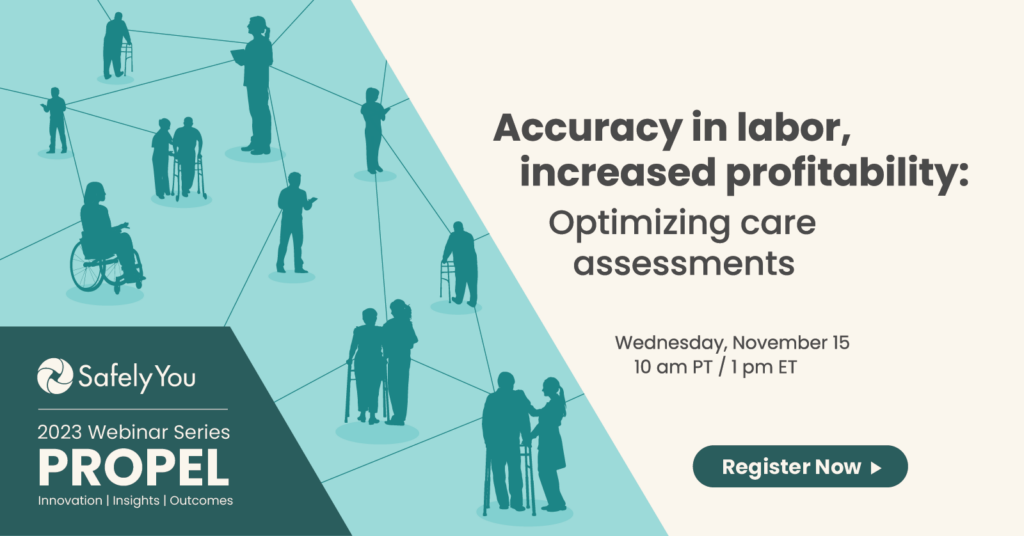The senior living industry is abuzz with talk about value-based care. But you may be unclear about the different types of models—or where to get started in a value-based care world. We brought together the experts who are leading the industry’s transition from FFS to VBC, to help you understand what it is, where to begin, and how to maximize value in value-based care.
1. What is value-based care?
Let’s start with defining value. According to Tony Gamboa, MD, Chief Growth & Innovation Officer at Curana Health, it’s a simple equation, “Value is the division of quality by cost. And how you measure quality is through metrics that relate to outcomes. So, for anyone who wants to participate in value-based care or population health, there’s a very simple way to look at what that means: Are you providing value to your residents by giving them an excess of quality, of good outcomes, compared to the cost?”
Better outcomes drive better value. Value-based care in skilled nursing and senior living is several different payment models that allow for finding the proper payment structure to focus on quality outcomes and the behaviors that drive those outcomes, including the use of technology. In contrast, in an FFS model, it’s more difficult to focus care quality and the daily approach to resident care, because providers must focus more on volume.
2. Did you say payvider, not provider?
The term payvider was introduced to use by our experts, outlining how payers not only offer health plans, but also act as medical groups and a delivery system. They can’t cover all needs, so they form the strategic partnerships critical to value-based care in order to provide seamless care experiences for their members.
3. What are the main types of value-based care models in skilled nursing and senior living?
Medicare Advantage – privatized Medicare, also called Medicare Part C
- Offers extra benefits that original Medicare doesn’t cover, like vision, hearing, and dental
- Tends to be significantly more affordable with reduced or even $0 co-pays and lower maximum out-of-pocket expenditures
- For all these reasons, MA is soon to overtake original Medicare as the most common form of Medicare in the US
Specific types of MA plans:
- ISNP – Institutionalized Special Needs Plan, which targets folks in assisted living or nursing homes
- CSNP – Chronic Special Needs Plan, which targets those with chronic conditions
- DSNS – Dual Special Needs Plan, which targets those who qualify for both Medicaid and Medicare
ACO – Accountable Care Organization (emerging); sits on top of original Medicare
These are all focused on high-quality care at a lower cost, and created for people who may struggle for different reasons to access the traditional healthcare system. And there are different ways to implement them in your communities.
You can choose to minimize your investment, partnering with another MA company to manage the care delivery for you. You may choose a higher level of integration, and pursue a shared savings arrangement, so you share the savings if you are able to achieve those higher outcome levels. Or you may choose to pursue another level of integration, where operators form joint ventures with health plans, to deliver care to their residents. At the highest level of integration, for operators who have a very high number of residents—in the tens of thousands—you may choose to open your own health plan, and manage all the care delivery yourself.
4. What are the benefits of VBC?
- Better outcomes for residents
- Increased family satisfaction
- Improved operational efficiency
- Increased clinician satisfaction, reduced turnover
- Improved cost savings
5. What are the risks of transitioning to VBC?
Our experts agree that “the biggest risk is doing nothing.” Today, the operator is holding a lot of risk, even on the liability side. That’s prompting some operators to move toward VBC, working with their insurance carriers to better understand if deploying this new care model can drive down their rates, and partnering with technology vendors like SafelyYou to help reduce risk.
6. How can an operator get started in a value-based care world?
- Find the right strategic partners to take you down a value-based journey
- Establish providers to fully integrate with your community team
- Identify your residents’ current payers & open discussions with their local representatives
- Share your interests in working with these payers, highlighting your community care plans
- Resources you can use to begin:

“As senior living shifts from hospitality to more of a care setting, we’re acknowledging that people are living longer, and their medical complexities are living longer with them. The seven-day a week golfer is no longer the resident you’re seeing. Preparing communities to address this, and to provide the best care and the best value to them, is part of why we’re doing this.”
Tony Gamboa, MD, Chief Growth & Innovation Officer at Curana Health
SafelyYou prioritizes creating the deep partnerships that will lead the future of senior care, including building relationships to support the transition from FFS to VBC. We believe the best care model is that which provides the best outcomes for residents, and we’re proud to be part of the ecosystem that helps communities offer all the benefits of value-based care.
To learn more about how we drive move-ins, avoid move-outs, and elevate quality of care, reach out to us at [email protected]. For the complete conversation with our VBC experts, watch the webinar on-demand.






